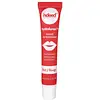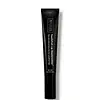What's inside
What's inside
 Key Ingredients
Key Ingredients

 Benefits
Benefits

 Concerns
Concerns

 Ingredients Side-by-side
Ingredients Side-by-side

Polybutene
Hydrogenated Poly(C6-14 Olefin)
EmollientCaprylic/Capric Triglyceride
MaskingButyrospermum Parkii Butter
Skin ConditioningPunica Granatum Sterols
Skin ConditioningIsosorbide Disunflowerseedate
HumectantEuphorbia Cerifera Wax
Hydroxystearic Acid
CleansingMangifera Indica Seed Butter
Skin ConditioningTocopheryl Acetate
AntioxidantEthylhexyl Palmitate
EmollientCetearyl Ethylhexanoate
EmollientPolyethylene
AbrasiveSilica Dimethyl Silylate
Emollient1,2-Hexanediol
Skin ConditioningCaprylyl Glycol
EmollientStearic Acid
CleansingTetrahexyldecyl Ascorbate
AntioxidantSorbitan Isostearate
EmulsifyingCarthamus Tinctorius Seed Oil
MaskingPalmitic Acid
EmollientPortulaca Pilosa Extract
Skin ConditioningTrihydroxystearin
Skin ConditioningSucrose Cocoate
EmulsifyingCamellia Oleifera Leaf Extract
AstringentCoffea Arabica Seed Extract
MaskingEuterpe Oleracea Fruit Extract
Garcinia Mangostana Fruit Extract
Skin ConditioningLycium Barbarum Fruit Extract
AstringentMorinda Citrifolia Fruit Extract
Skin ConditioningPunica Granatum Extract
AstringentSodium Hyaluronate
HumectantPalmitoyl Tripeptide-38
Skin ConditioningGlucomannan
Skin ConditioningCI 73360
Cosmetic ColorantCI 15850
Cosmetic ColorantPolybutene, Hydrogenated Poly(C6-14 Olefin), Caprylic/Capric Triglyceride, Butyrospermum Parkii Butter, Punica Granatum Sterols, Isosorbide Disunflowerseedate, Euphorbia Cerifera Wax, Hydroxystearic Acid, Mangifera Indica Seed Butter, Tocopheryl Acetate, Ethylhexyl Palmitate, Cetearyl Ethylhexanoate, Polyethylene, Silica Dimethyl Silylate, 1,2-Hexanediol, Caprylyl Glycol, Stearic Acid, Tetrahexyldecyl Ascorbate, Sorbitan Isostearate, Carthamus Tinctorius Seed Oil, Palmitic Acid, Portulaca Pilosa Extract, Trihydroxystearin, Sucrose Cocoate, Camellia Oleifera Leaf Extract, Coffea Arabica Seed Extract, Euterpe Oleracea Fruit Extract, Garcinia Mangostana Fruit Extract, Lycium Barbarum Fruit Extract, Morinda Citrifolia Fruit Extract, Punica Granatum Extract, Sodium Hyaluronate, Palmitoyl Tripeptide-38, Glucomannan, CI 73360, CI 15850
Hydrogenated Polyisobutene
EmollientJojoba Esters
EmollientPhenyl Trimethicone
Skin ConditioningTribehenin
EmollientHelianthus Annuus Seed Oil Unsaponifiables
EmollientEthylhexyl Palmitate
EmollientButyrospermum Parkii Butter
Skin ConditioningButyrospermum Parkii Butter Unsaponifiables
Skin ConditioningSodium Hyaluronate
HumectantSucrose Cocoate
EmulsifyingTetrahexyldecyl Ascorbate
AntioxidantTocopheryl Acetate
AntioxidantCamellia Sinensis Leaf Extract
AntimicrobialPalmitoyl Tripeptide-1
Skin ConditioningPalmitoyl Tripeptide-38
Skin ConditioningDipalmitoyl Hydroxyproline
Skin ConditioningPortulaca Pilosa Extract
Skin ConditioningCaprylic/Capric Triglyceride
MaskingButylene Glycol
HumectantCetearyl Ethylhexanoate
EmollientSorbitan Isostearate
EmulsifyingSilica Dimethyl Silylate
EmollientGlyceryl Caprylate
EmollientMentha Arvensis Leaf Oil
MaskingHydrogenated Polyisobutene, Jojoba Esters, Phenyl Trimethicone, Tribehenin, Helianthus Annuus Seed Oil Unsaponifiables, Ethylhexyl Palmitate, Butyrospermum Parkii Butter, Butyrospermum Parkii Butter Unsaponifiables, Sodium Hyaluronate, Sucrose Cocoate, Tetrahexyldecyl Ascorbate, Tocopheryl Acetate, Camellia Sinensis Leaf Extract, Palmitoyl Tripeptide-1, Palmitoyl Tripeptide-38, Dipalmitoyl Hydroxyproline, Portulaca Pilosa Extract, Caprylic/Capric Triglyceride, Butylene Glycol, Cetearyl Ethylhexanoate, Sorbitan Isostearate, Silica Dimethyl Silylate, Glyceryl Caprylate, Mentha Arvensis Leaf Oil
Ingredients Explained
These ingredients are found in both products.
Ingredients higher up in an ingredient list are typically present in a larger amount.
This ingredient is also known as shea butter. It is an effective skin hydrator and emollient.
Emollients help soothe and soften your skin. It does this by creating a protective film on your skin. This barrier helps trap moisture and keeps your skin hydrated. Emollients may be effective at treating dry or itchy skin.
Shea butter is rich in antioxidants. Antioxidants help fight free-radicals, or molecules that may harm the body. It is also full of fatty acids including stearic acid and linoleic acid. These acids help replenish the skin and keep skin moisturized.
While Shea Butter has an SPF rating of about 3-4, it is not a sunscreen replacement.
Shea butter may not be fungal acne safe. We recommend speaking with a professional if you have any concerns.
Learn more about Butyrospermum Parkii ButterThis ingredient is an emollient, solvent, and texture enhancer. It is considered a skin-softener by helping the skin prevent moisture loss.
It helps thicken a product's formula and makes it easier to spread by dissolving clumping compounds.
Caprylic Triglyceride is made by combining glycerin with coconut oil, forming a clear liquid.
While there is an assumption Caprylic Triglyceride can clog pores due to it being derived from coconut oil, there is no research supporting this.
Learn more about Caprylic/Capric TriglycerideCetearyl Ethylhexanoate is derived from cetearyl alcohol and sorbic acid.
It is an emollient and helps hydrate the skin. Emollients form a barrier on the skin to prevent water from escaping.
Ethylhexyl Palmitate, also known as octyl palmitate, is created from 2-ethylhexyl alcohol and palmitic acid. It is a fatty acid ester.
The fatty acid content of Ethylhexyl Palmitate makes it an emollient. Emollients help soften and hydrate your skin by trapping moisture within.
Ethylhexyl Palmitate is also used to help improve the texture of cosmetics. It helps other ingredient dissolve in products and help disperse ingredients more evenly.
You'll likely find this ingredient in sunscreen, as it is often used to mix UV-blocking ingredients such as avobenzone and ethylhexyl triazone.
It can also help stabilize the fragrances in a product as a fragrance fixative.
Ethylhexyl Palmitate can be used to substitute mineral oil.
Due to its high fatty acid content, it may not be fungal-acne safe.
Learn more about Ethylhexyl PalmitateThis synthetic, signal peptide has unique skin conditioning properties in that is a matrikine-mimetic compound.
First of all, Palmitoyl Tripeptide-38 is a signal peptide; signal peptides tell the body to create more collagen.
What is a matrikine-mimetic compound?
This peptide has the ability to mimic matrikines in skin. Our skin created matrikines by breaking down matrix proteins into peptides.
Matrikines play a role in:
Though further research is needed, this ingredient seems pretty promising. In one study, women over the age of 40 with visible photoaging used a vitamin C serum with this ingredient for 56 days (15% ascorbid acid, 5 ppm palmitoyl tripeptide‐38). The results found improvement in skin roughness and skin tone.
This peptide is also part of the famous Matrixyl synthe’6, a blend of ingredients that also includes glycerin, water, and hydroxypropyl cyclodextrin.
Learn more about Palmitoyl Tripeptide-38We don't have a description for Portulaca Pilosa Extract yet.
This silica is mainly used to thicken oils and suspend particles in oils. It is not water soluble.
According to the manufacturer, it:
The manufacturer also claims this ingredient to be useful in makeup.
In lipstick formulations, this ingredient improves color payoff, reduces pigment settling, and reduces oil bleeding. This ingredient also improves the grip of powder products such as dry shampoos.
Learn more about Silica Dimethyl SilylateSodium Hyaluronate is hyaluronic acid's salt form. It is commonly derived from the sodium salt of hyaluronic acid.
Like hyaluronic acid, it is great at holding water and acts as a humectant. This makes it a great skin hydrating ingredient.
Sodium Hyaluronate is naturally occurring in our bodies and is mostly found in eye fluid and joints.
These are some other common types of Hyaluronic Acid:
Learn more about Sodium HyaluronateSorbitan Isostearate is an emulsifer and cleaning agent. It is created from isostearic acid and sorbitol.
As an emulsifier, Sorbitan Isostearate prevents oils and water from separating.
Due to its isostearic acid base, it may not be safe for Malassezia or fungal acne.
Learn more about Sorbitan IsostearateSucrose Cocoate is created from the sucrose esters of coconut acid. Coconut acid is comprised of the fatty acids of coconut oil.
It is an emulsifier and skin conditioner.
This ingredient may not be fungal acne safe.
Learn more about Sucrose CocoateTetrahexyldecyl Ascorbate (THD) is a stable and oil-soluble form of Vitamin C.
THD is special in that it has the ability to travel deeper into skin than traditional ascorbic acid while maintaining the same skin benefits (double win!).
Because it’s oil-soluble, THD dives deep into your skin’s fatty layers (think ceramides and cholesterol) to fight off the kind of free radicals that mess with your skin barrier. This makes it a great pair with water-based vitamin C (ascorbic acid) that mainly works on the surface.
Even at just 0.1%, THD is already showing great antioxidant activity. When used up to 2%, it helps keep your skin happy and calm, especially when it’s stressed from pollution or sun.
Want to fade dark spots or tackle hyperpigmentation? You’ll want 5% or more. Pairing it with brightening buddies like niacinamide or licorice root gives even better results. One study even used 30% THD with other brighteners and saw real results on stubborn discoloration, even in melasma-prone skin.
A note on THD: It’s has a slightly silky, oily texture and usually shows up colorless or pale yellow (though the exact shade can vary by supplier).
While you can sneak it into water-based formulas, it really shines when paired with silicones or oils, which help your skin soak it up better.
THD is pretty stable, but it’s still vulnerable to degradation like ascorbic acid. Too much light or heat (above 113°F / 45°C) can break it down over time. Go for dark and opaque packaging that keeps it safe and shady!
Read more about other types of Vitamin C:
Learn more about Tetrahexyldecyl AscorbateTocopheryl Acetate is AKA Vitamin E. It is an antioxidant and protects your skin from free radicals. Free radicals damage the skin by breaking down collagen.
One study found using Tocopheryl Acetate with Vitamin C decreased the number of sunburned cells.
Tocopheryl Acetate is commonly found in both skincare and dietary supplements.
Learn more about Tocopheryl Acetate